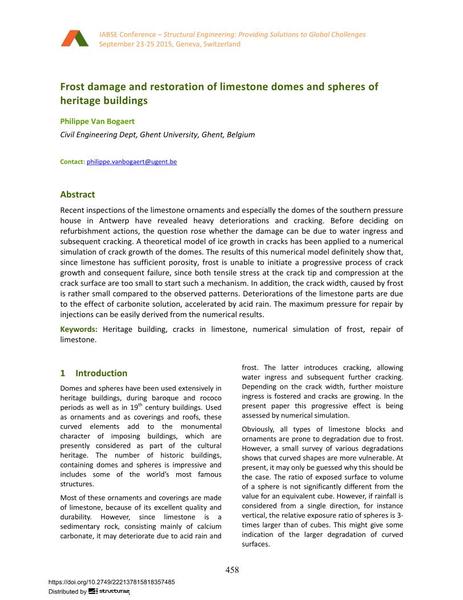Frost damage and restoration of limestone domes and spheres of heritage buildings

|
|
|||||||||||
Détails bibliographiques
| Auteur(s): |
Philippe Van Bogaert
(Civil Engineering Dept, Ghent University, Ghent, Belgium)
|
||||
|---|---|---|---|---|---|
| Médium: | papier de conférence | ||||
| Langue(s): | anglais | ||||
| Conférence: | IABSE Conference: Structural Engineering: Providing Solutions to Global Challenges, Geneva, Switzerland, September 2015 | ||||
| Publié dans: | IABSE Conference Geneva 2015 | ||||
|
|||||
| Page(s): | 458-465 | ||||
| Nombre total de pages (du PDF): | 8 | ||||
| Année: | 2015 | ||||
| DOI: | 10.2749/222137815818357485 | ||||
| Abstrait: |
Recent inspections of the limestone ornaments and especially the domes of the southern pressure house in Antwerp have revealed heavy deteriorations and cracking. Before deciding on refurbishment actions, the question rose whether the damage can be due to water ingress and subsequent cracking. A theoretical model of ice growth in cracks has been applied to a numerical simulation of crack growth of the domes. The results of this numerical model definitely show that, since limestone has sufficient porosity, frost is unable to initiate a progressive process of crack growth and consequent failure, since both tensile stress at the crack tip and compression at the crack surface are too small to start such a mechanism. In addition, the crack width, caused by frost is rather small compared to the observed patterns. Deteriorations of the limestone parts are due to the effect of carbonite solution, accelerated by acid rain. The maximum pressure for repair by injections can be easily derived from the numerical results. |
||||
